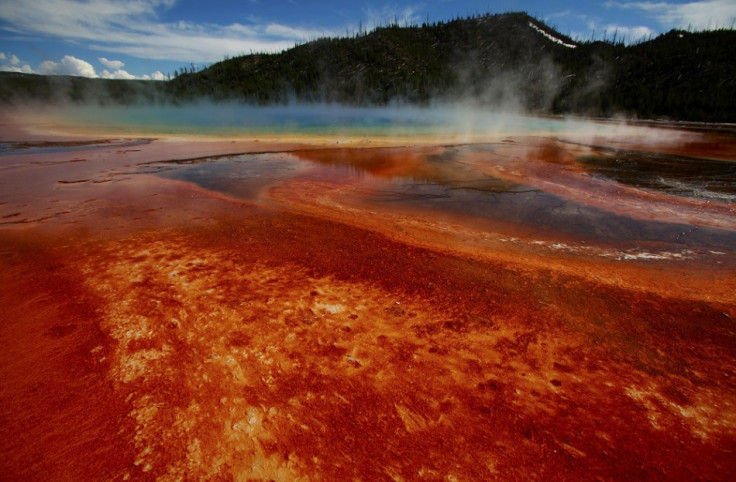Yellowstone supervolcano eruption may be triggered by collapsing rock above magma chamber

Eruptions at supervolcanoes like Yellowstone might be triggered by the roof above them collapsing or cracking, scientists have said, challenging the idea they blow as a result of magma buoyancy. Understanding how supervolcanoes erupt is important as they have the potential to cause catastrophic destruction felt across the whole globe.
The researchers, from the University of Illinois, Pomona College and Oregon State University said that unlike normal volcanoes that erupt because of pressure in the magma chamber building until it causes an explosion, supervolcano eruptions appear to be triggered by external mechanisms.
Patricia Gregg, who led the study published in the Journal of Volcanology and Geothermal Research, said: "If we want to monitor supervolcanoes to determine if one is progressing toward eruption, we need better understanding of what triggers a supereruption. It's very likely that supereruptions must be triggered by an external mechanism and not an internal mechanism, which makes them very different from the typical, smaller volcanoes that we monitor."
Supervolcanoes are 'super' because they have more than 500 cubic kilometres of erupted magma volume. The Mount St Helen's, in comparison, ejected around one cubic kilometre of material. At Yellowstone, scientists recently discovered a magma reservoir big enough to fill the Grand Canyon 11 times over.
Last year, another theory about supervolcano eruptions was proposed by researchers in the journal Nature Geoscience. In two papers, they said eruptions were to do with magma buoyancy, suggesting magma is less dense than the surrounding rock, meaning it could push up against its roof, increasing the pressure in the chamber and triggering an eruption.

In contrast, the latest study says eruptions are to do with external forces. Gregg said: "At supervolcanic sites ... we don't see a lot of evidence for pressurization. When I incorporated buoyancy into my numerical models, I couldn't reproduce the 2014 studies. The fact that my numerical model was not agreeing with their analytical solution suggested that there was something missing from the analytical solution. So that prompted me to look closer. What they miss in the buoyancy model is Newtonian physics: The magma may push up, but the roof pushes back down."
Instead, Gregg and her colleagues' latest study suggests the size of the magma chamber is more important when triggering eruptions as it affects the stability of the rock that contains the chamber.
"Previous studies have found that as a magma chamber expands, it pushes the roof up and forms faults. As these very large magma chambers grow, the roof above may become unstable and it becomes easier to trigger an eruption through faulting or failure within the rock."
A fault, they say, penetrates the magma, which uses the crack to shoot up to the surface. This leads to a chain reaction that 'unzips' the entire supervolcano. "It is important to know if supervolcano eruptions are triggered by internal factors or by foundering and faulting in the roof. It may mean that we have to monitor these volcanoes differently," she said. "A typical volcano, when it erupts, can have lasting impacts across the globe. We've seen that in Iceland when we've had large ash eruptions that have completely disrupted air traffic across Europe. A supereruption takes that to the nth degree."
© Copyright IBTimes 2025. All rights reserved.






















